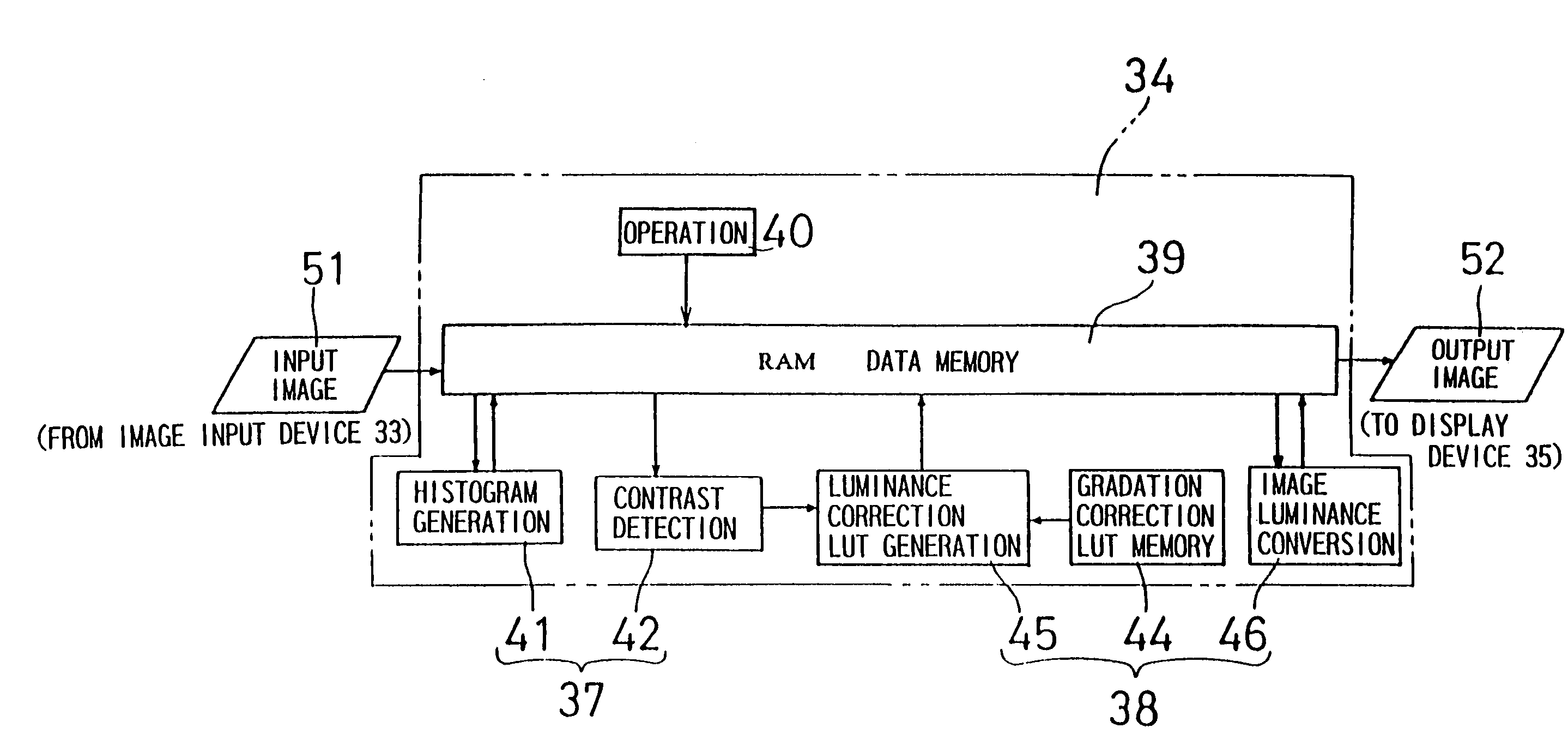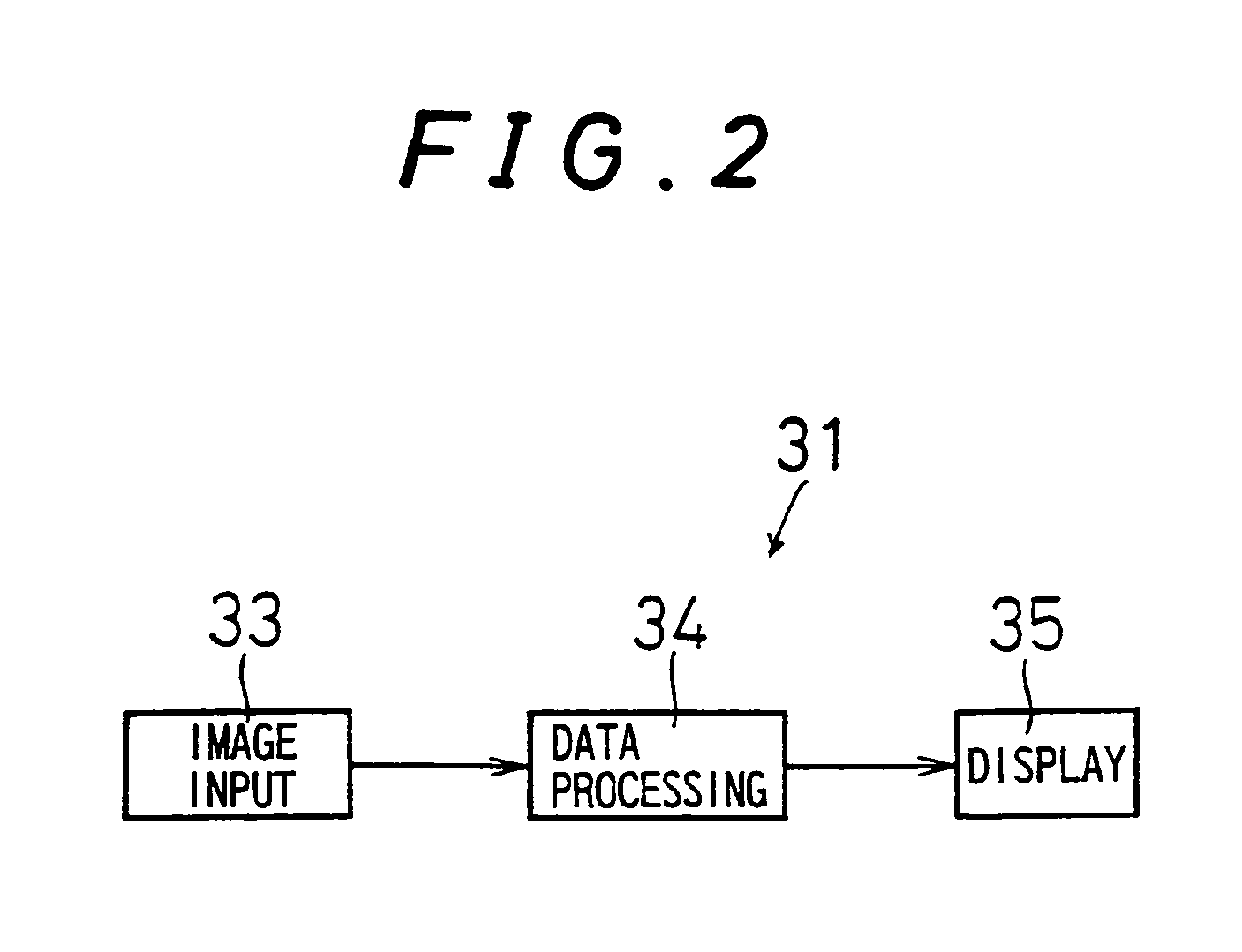Image processing device and image processing method
a technology of image processing and image data, which is applied in the field of image processing devices and methods, can solve the problems of increasing the cost of generating sentence data, affecting affecting the presentation of images, so as to reduce the visibility of images, easy to read, and easy to read
- Summary
- Abstract
- Description
- Claims
- Application Information
AI Technical Summary
Benefits of technology
Problems solved by technology
Method used
Image
Examples
first embodiment
[0106]FIG. 1 is a block diagram showing the electrical configuration of a data processing device 34 included in an image processing device 31 in accordance with the invention. FIG. 2 is a block diagram showing the general electrical configuration of the image processing device 31. Both FIG. 1 and FIG. 2 will be described.
[0107]The image processing device 31 includes an image input device 33, a data processing device 34 and a display device 35. The data processing device 34 includes a data memory unit 39, a contrast estimation unit 37, a luminance correction unit 38 and an operation unit 40. The contrast estimation unit 37 includes a histogram generation unit 41 and a contrast detection unit 42. The luminance correction unit 38 includes a gradation characteristic correction lookup table memory means 44, a luminance correction lookup table generation means 45 and an image luminance conversion unit 46. Hereinafter, “lookup table” is sometimes simply referred to as “LUT.”
[0108]The image...
second embodiment
[0165]FIG. 8 is a block diagram showing the electrical configuration of the data processing device 81 in the image processing device in accordance with the The data processing device 81 includes a character region extracting unit 83, an image sharpening unit 84, a luminance correction unit 85, a data memory unit 86 and an operation unit 40. The luminance correction unit 85 includes a gradation correction LUT memory unit 44 and an image luminance conversion unit 87. The character region extracting unit 83 extracts one or a plurality of character regions from an input image 51. The character region is a portion having characters in the input image 51. The image sharpening unit 84 subjects the input image data 51 to the so-called selective sharpening process on the basis of the result of the extraction of the character regions of the character region extracting unit 83. In this case, the sharpening level of the sharpening process performed for the character regions in the input image ...
third embodiment
[0238]FIG. 21 is a flowchart explaining the image correction process carried out by the image processing device 101 of the image processing device of the The image correction process will be described by using the flowchart of FIG. 21. The flowchart of FIG. 21 includes steps for carrying out operations similar to those of the flowcharts of FIG. 2 and FIG. 9, and the detailed explanations of the steps for carrying out the similar operations are omitted.
[0239]For example, when the operator of the image processing device instructs to execute the image correction process by using the operation unit 40, the process advances from step e1 to step e2. The image data input process at step e2 and the estimation process of the contrast [Lv, Hv] of the input image at steps e3 to e12 are equal to the process at step a2 and the process at steps a3 to a12 of the flowchart of FIG. 2 respectively.
[0240]At step e13, the contrast correction LUT generation unit 104 generates the contrast correction lo...
PUM
 Login to View More
Login to View More Abstract
Description
Claims
Application Information
 Login to View More
Login to View More - R&D
- Intellectual Property
- Life Sciences
- Materials
- Tech Scout
- Unparalleled Data Quality
- Higher Quality Content
- 60% Fewer Hallucinations
Browse by: Latest US Patents, China's latest patents, Technical Efficacy Thesaurus, Application Domain, Technology Topic, Popular Technical Reports.
© 2025 PatSnap. All rights reserved.Legal|Privacy policy|Modern Slavery Act Transparency Statement|Sitemap|About US| Contact US: help@patsnap.com



